Tom's Hardware Verdict
The AMD RX 5500 XT 4GB is a viable performer in the crowded 1080p budget space. Pricing is fair, but would be much more attractive even if it were $10 cheaper. Get the 8GB model for better performance in VRAM-heavy titles.
Pros
- +
Competent 60 fps 1080p performance
- +
Much more efficient than Polaris
Cons
- -
4GB variant is notably slower in certain titles
Why you can trust Tom's Hardware
Now finally, after a three-month wait, the AMD Radeon RX 5500 XT is here targeting AAA gameplay at 1080p. With MSRPs of $169 (4GB) and $199 (8GB), AMD’s latest Navi cards compete with the GTX 1650 Super ($169.99) and GTX 1660 ($199.99), with AMD touting performance that punches above the 1650 Super in several titles.
AMD launched its latest RNDA architecture in the summer of 2019 with the Radeon RX 5700 XT and RX 5700. The faster XT variant performed well, beating out Nvidia’s RTX 2060 Super by an average of around 10% at the time, with the non-XT 5700 not far behind. Although it used more power than the RTX 2060 Super, the flagship XT offered smooth gameplay at 1440p and is a viable alternative to the ray tracing-capable RTX 2060 Super at the same $400 price point.
These new AMD cards planted a flag in the mid-range segment, putting Team Green on notice. Flash forward to October, when AMD announced the RX 5500 series cards would be released, targeting the budget market. Since then, we’ve seen Nvidia update its mainstream Turing lineup, releasing ‘Super’ variants of the GTX 1660 and GTX 1650. These cards offered more performance previous iterations, filling in the performance gaps between the SKUs with only a small increase in price.
Features
The RX 5500 XT uses a variant of the Navi 14 XTX GPU and is manufactured on TSMC’s 7nm finFET process, with 6.4 billion transistors squeezed into a 158 square millimeter die. Under the hood, Navi 14 XTX features 22 Compute Units (CUs) for a total of 1,408 Stream Processors. Each RDNA CU has four texture units, 88 TMUs, along with 32 ROPs.
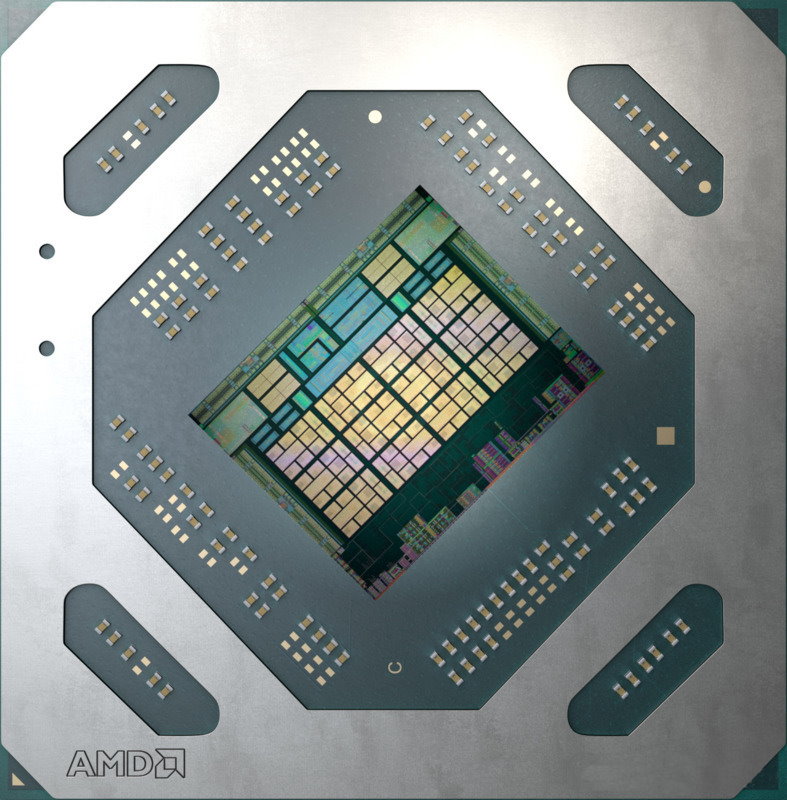
Reference clocks speeds are listed as 1,435 MHz base, 1717 MHz Game Clock, and 1,845 MHz Boost clock. AMD will not release a reference card, so clock speeds will vary with each model. The Sapphire RX 5500 XT Pulse we have for review has a 1,607 MHz game clock, with Boost listed as 1,845 MHz. Actual core clock speeds will be much closer to the game value than the Boost.
AMD’s 5500 series cards will come either 4GB or 8GB of GDDR6 memory. The 4GB variant sits on the 128-bit bus, with reference speeds of 1,750 MHz (14 Gbps GDDR6 effective). The 8GB card retains the same specifications, but with a higher memory capacity. Later on, we’ll see in some games the 4GB card we tested is notably slower when using Ultra settings.
Get Tom's Hardware's best news and in-depth reviews, straight to your inbox.
Power consumption on the 7nm 4GB part comes in at 130W in reference form, with the 8GB card sporting increased power targets for the additional memory. Many partner cards could raise that a bit with increase factory clocks speeds. This compares to the 120W reference GTX 1660/1660 Ti and the GTX 1650 Super at 100W.
One thing’s for sure: Performance per watt has improved significantly over the Polaris based GPUs -- 1.6x better performance per Watt according to AMD, with the company now at least in the ballpark of Nvidia’s efficiency.
Display outputs will vary by vendor, but the reference specification includes at least one of each HDMI, DisplayPort, and DVI. Feeding power to the card will be a single 8-pin connector.
Below is a detailed specifications table, covering the new GPUs:
| Header Cell - Column 0 | Sapphire Radeon RX 5500 XT Pulse 4GB | Radeon RX 5700 | Radeon RX 5700 XT |
|---|---|---|---|
| Architecture (GPU) | RDNA (Navi 14 XTX) | RDNA (Navi 10) | RDNA (Navi 10) |
| ALUs/Stream Processors | 1408 | 2304 | 2560 |
| Peak FP32 Compute (Based on Typical Boost) | 5.2 TFLOPS | 7.5 TFLOPS | 9 TFLOPS |
| Tensor Cores | N/A | N/A | N/A |
| RT Cores | N/A | N/A | N/A |
| Texture Units | 88 | 144 | 160 |
| ROPs | 32 | 64 | 64 |
| Base Clock Rate | 1607 MHz | 1465 MHz | 1605 MHz |
| Nvidia Boost/AMD Game Rate | 1717 MHz | 1625 MHz | 1755 MHz |
| AMD Boost Rate | 1845 MHz | 1725 MHz | 1905 MHz |
| Memory Capacity | 4/8GB GDDR6 | 8GB GDDR6 | 8GB GDDR6 |
| Memory Bus | 128-bit | 256-bit | 256-bit |
| Memory Bandwidth | 224 GB/s | 448 GB/s | 448 GB/s |
| L2 Cache | 2MB | 4MB | 4MB |
| TDP | 130W | 177W (measured) | 218W (measured) |
| Transistor Count | 6.4 billion | 10.3 billion | 10.3 billion |
| Die Size | 158 mm² | 251 mm² | 251 mm² |
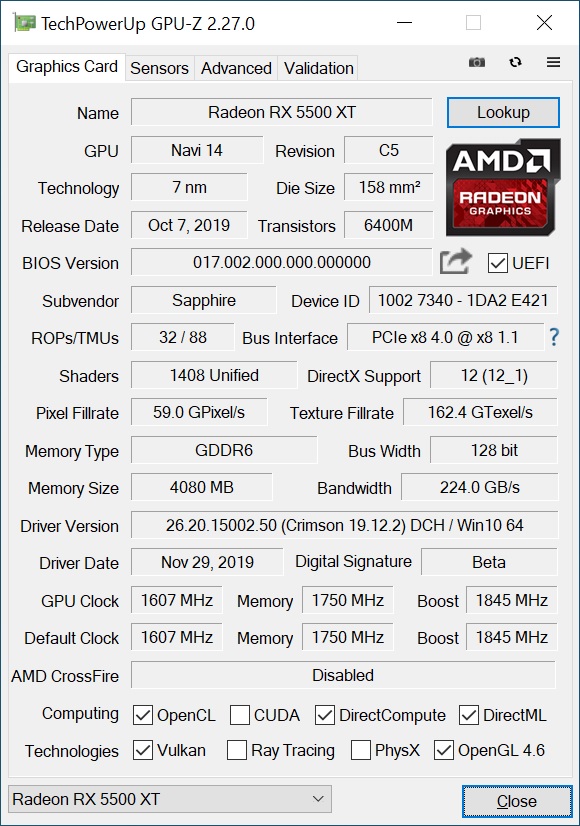
Design
The card we have for review is the Sapphire Pulse OC 4GB, which measures in roughly 9 x 4.8” x 1.63 inches, making it a dual-slot card. It’s not quite a small-form-factor card, but certainly not a full-size monster. In fact, the PCB is small enough foor SFF systems, but the Dual-X cooler Sapphire uses adds a couple of inches to it. As always, be sure to check your case specifications to make sure there are no clearance issues.
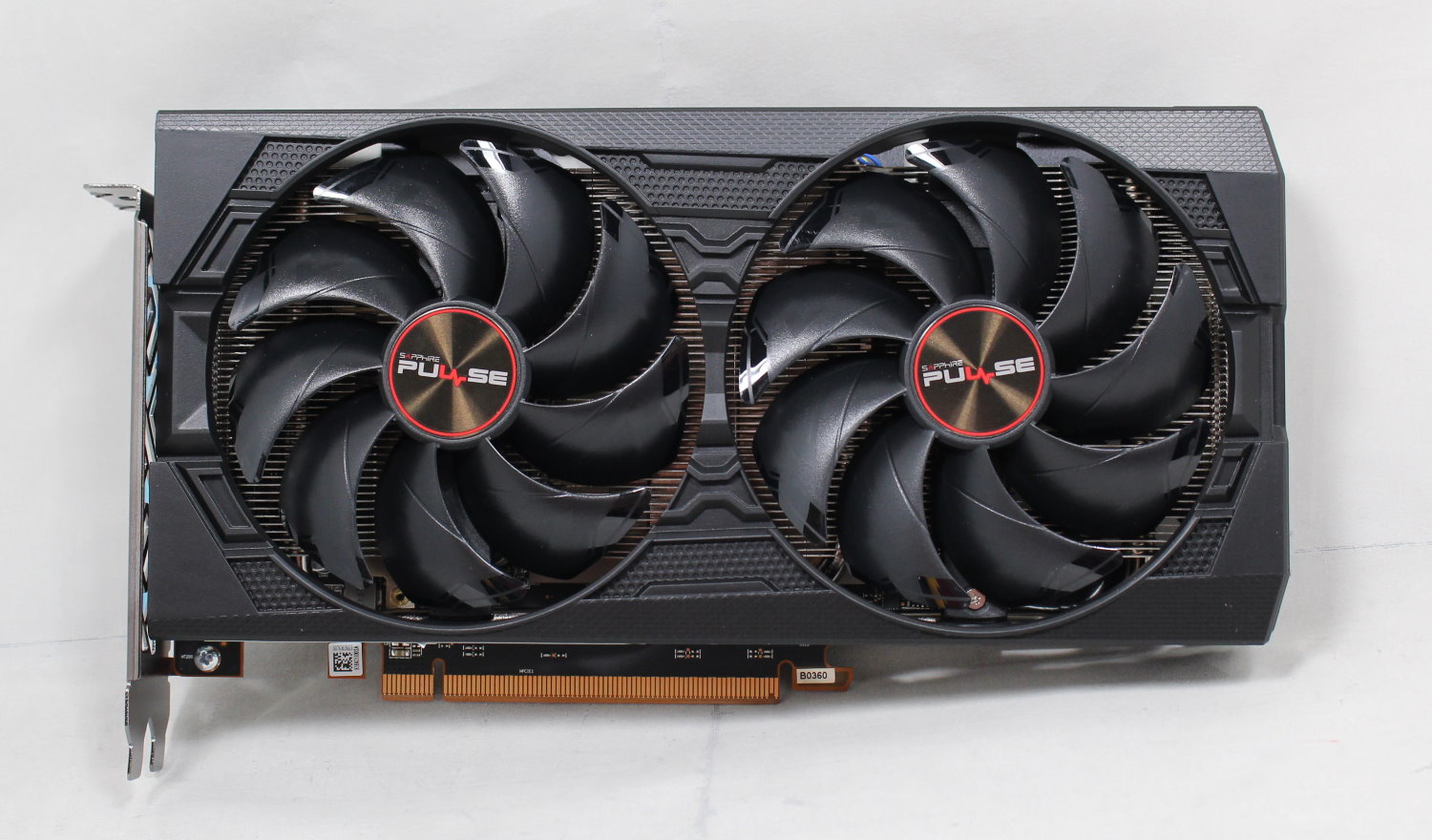
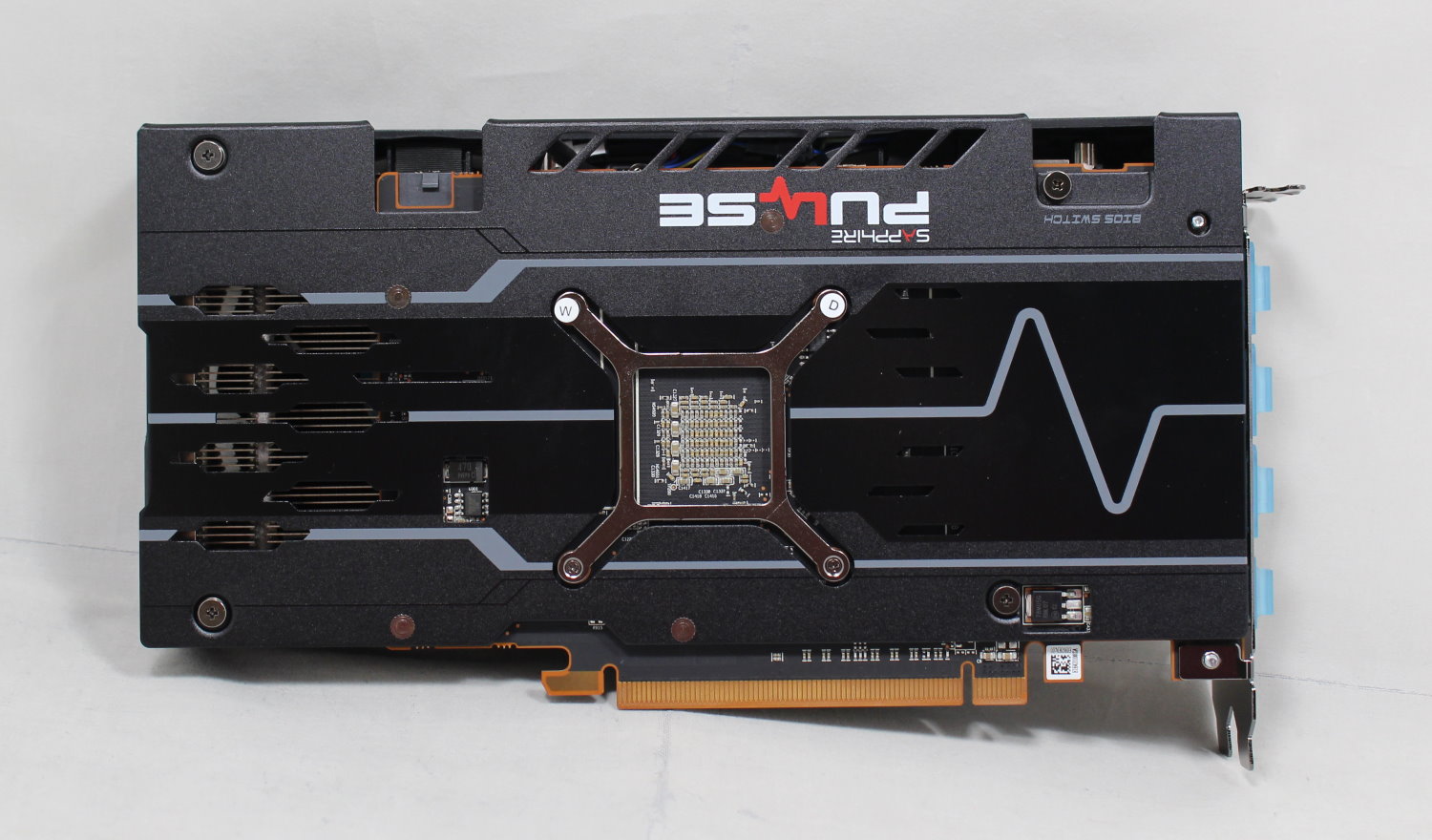
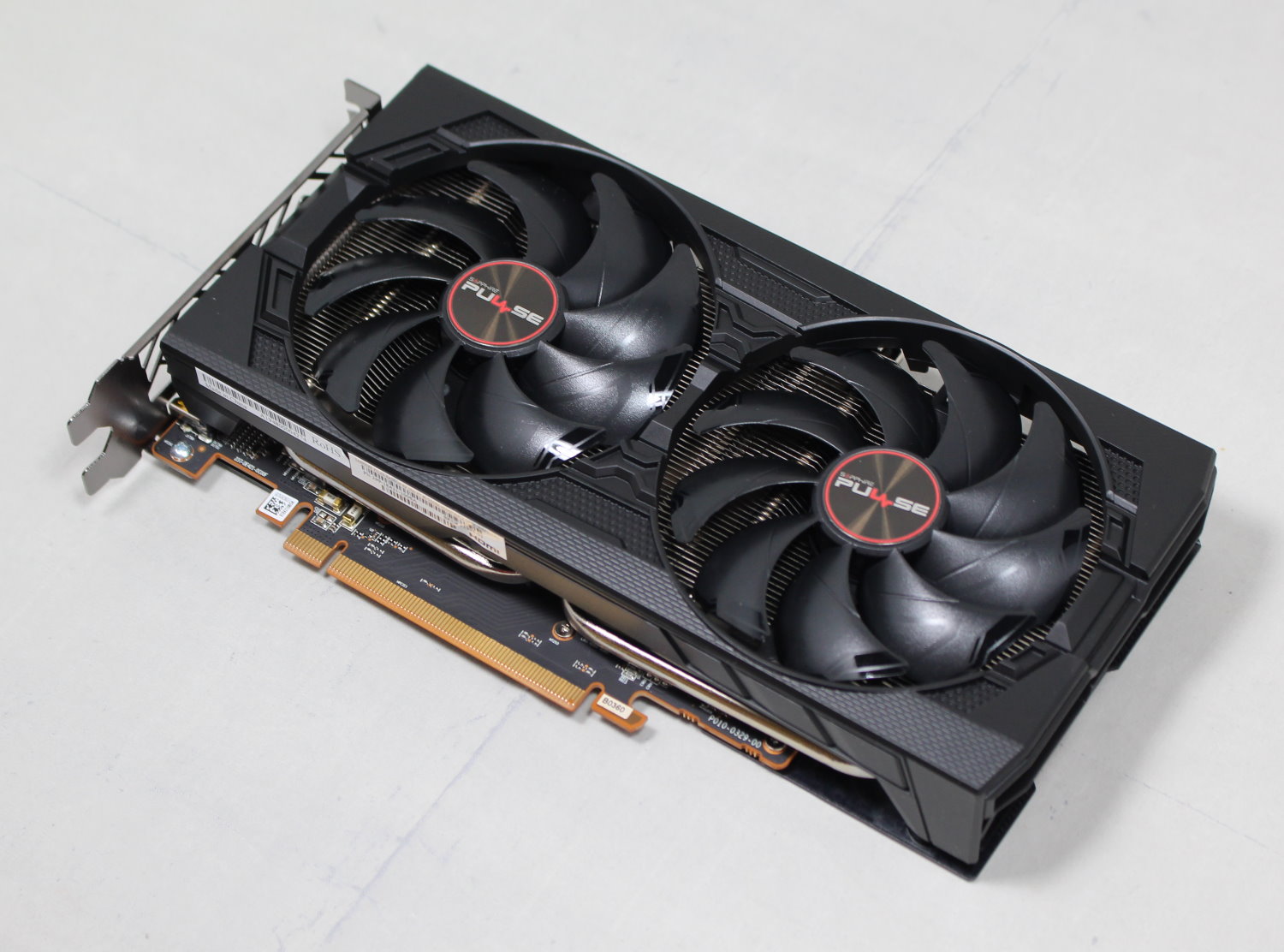
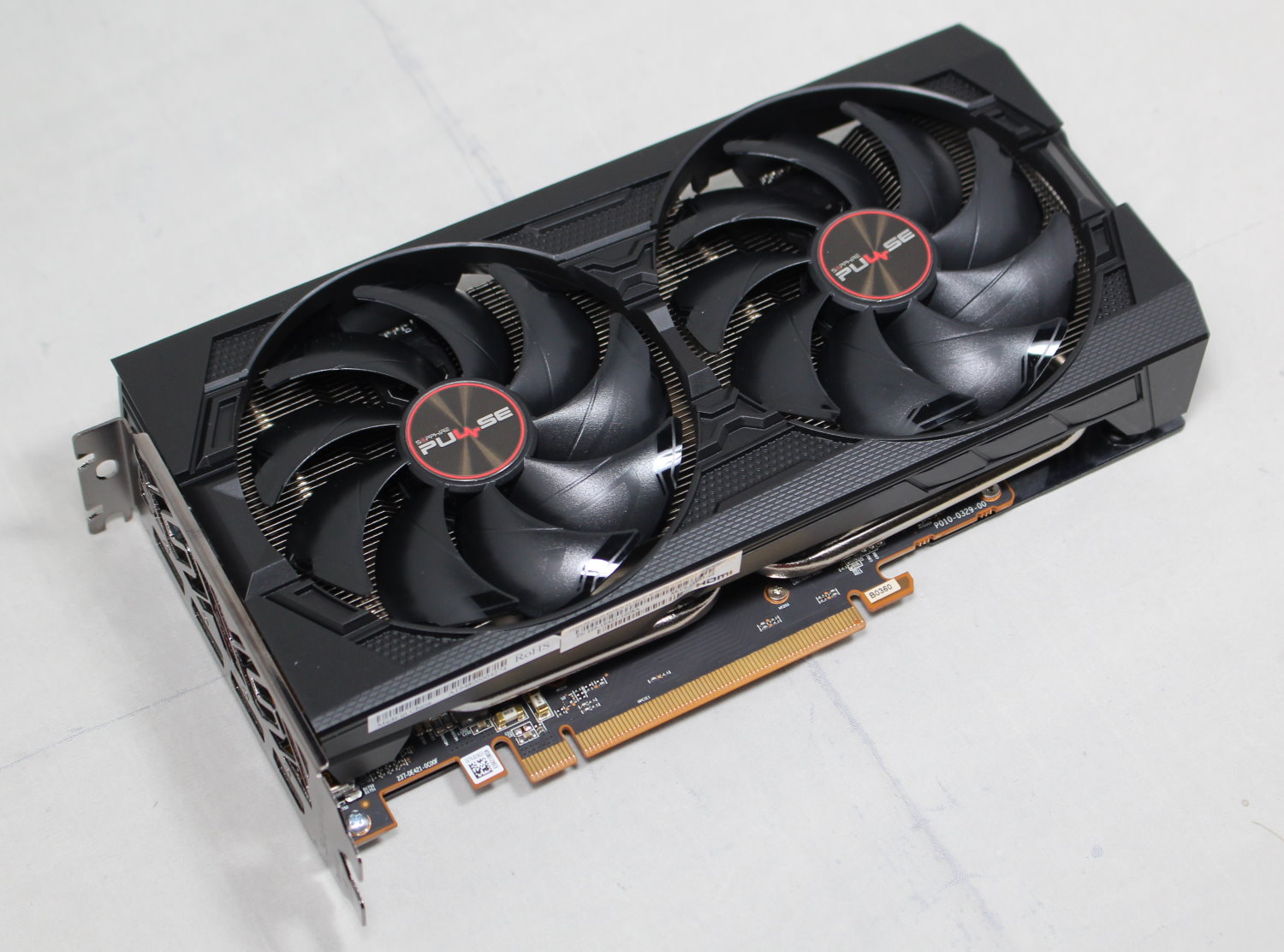
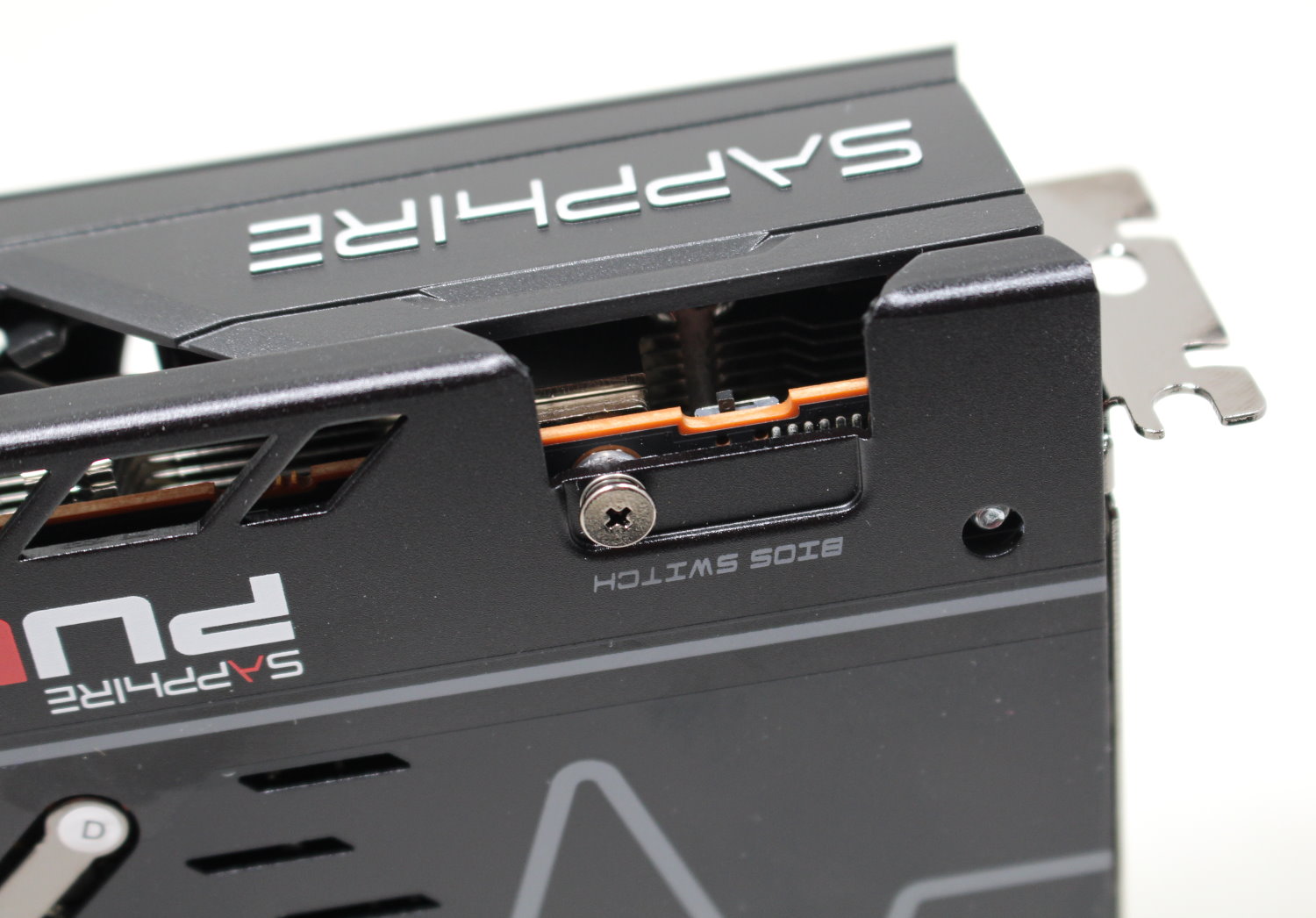
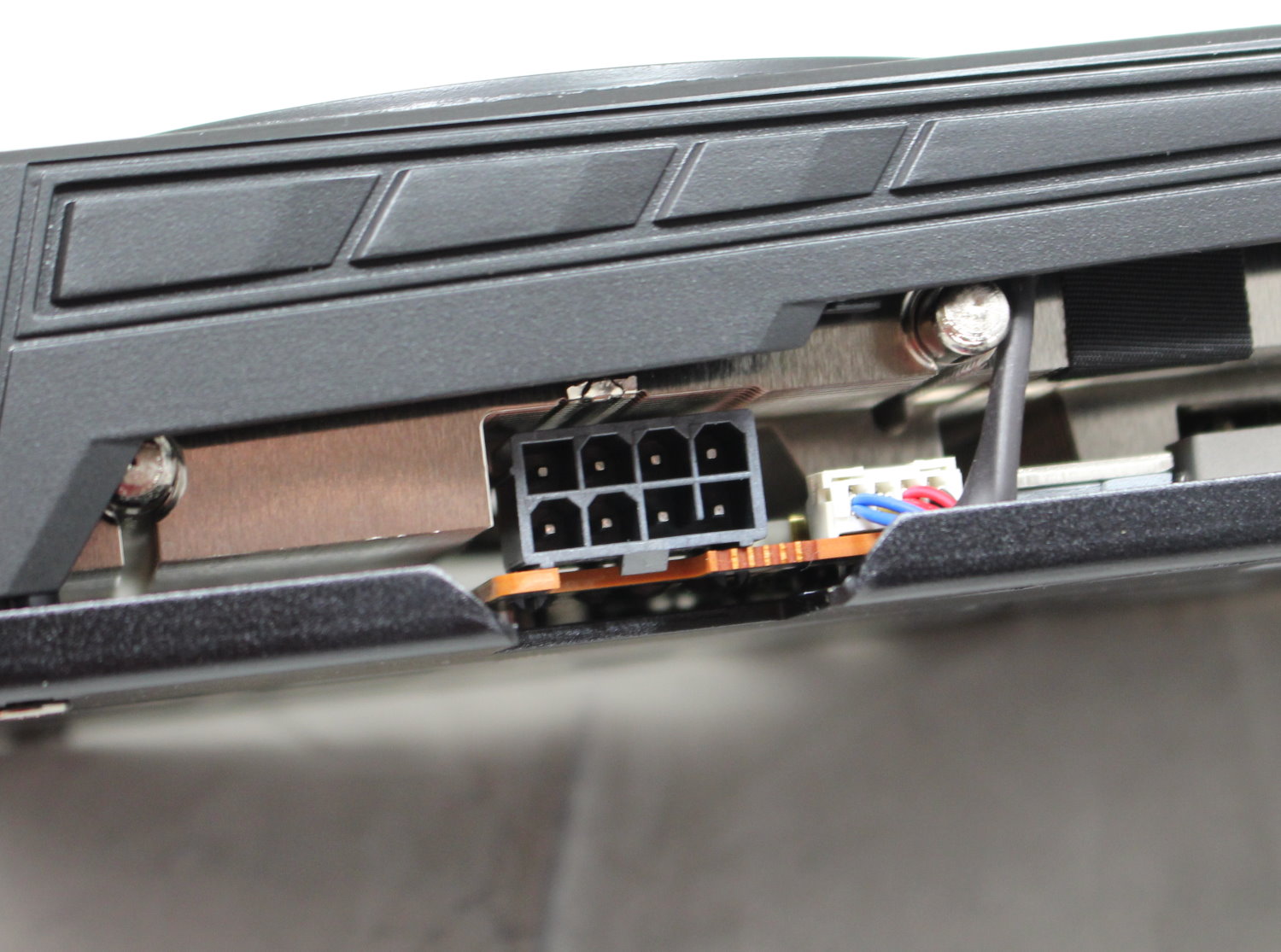
Note that the card lacks any RGB lighting here. But in general the card should blend in well with most build themes.
The RX 5500 XT Pulse OC’s cooler sports a black shroud with two 90mm ball bearing fans, for quiet and long-term operation. The card also features a zero-fan feature, where the fan remains off under low loads and temperatures (under 50C), delivering silence at the desktop or with other light loads.
The Pulse also includes a backplate for aesthetics and additional rigidity, with a hole cut out where the GPU sits, and grey pulse-like lines running the length of the card.
A dual BIOS switch on the top of the card, near the IO side, is used to protect users from bricking a card if they decide to flash it. On the RX 5700 XT Pulse, it was designed with a silent mode with lower clocks. But in this case, the clocks do not change with the switch.
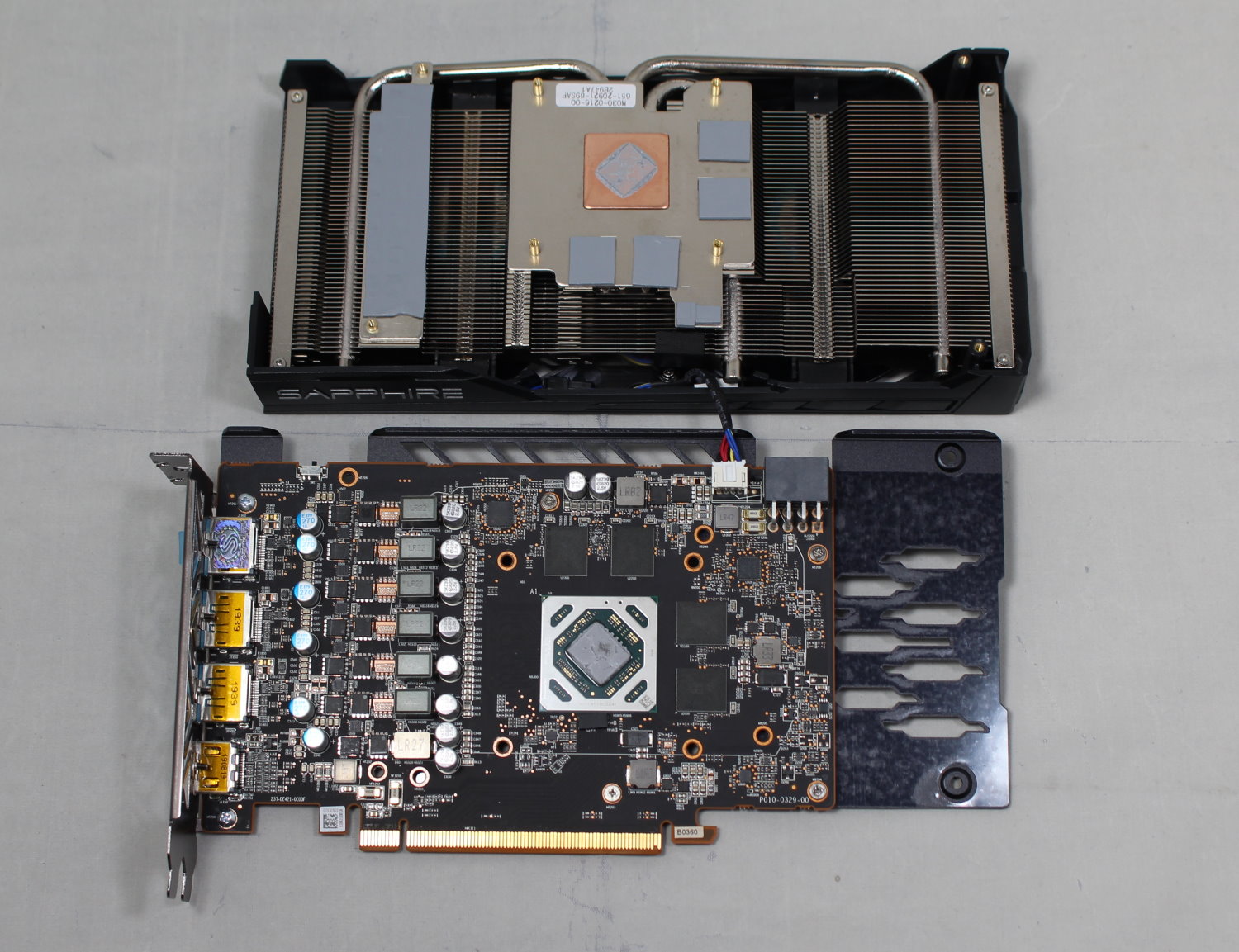
The heatsink is a large fin-array, covering the full length and height of the Pulse. A copper plate makes direct contact with the GPU die and sends heat through three heatpipes that snake their way through the fins. The 4GB GDDR6 memory is cooled by an aluminum plate directly connected to the fins. The VRMs are also cooled by the heatsink, via a thermal pad that brings them in contact with the heatsink.
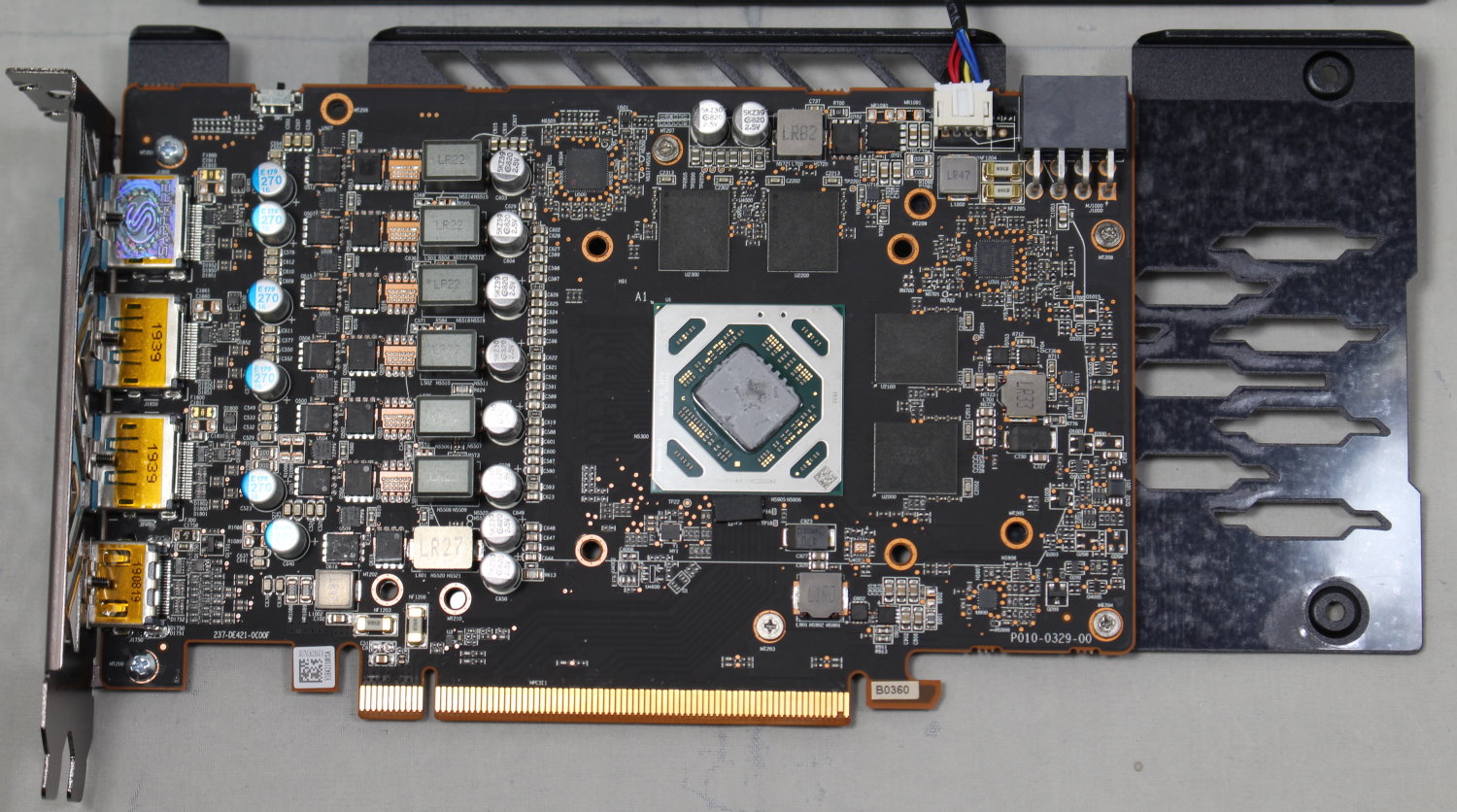
AMD didn’t volunteer the reference specifications for power delivery, but this model is rocking a 6+1 phase setup and uses a high-quality International Rectifier IR35217 multi-phase controller for power management. Sending power to the VRMs is a single 8-pin PCIe connector. Between it and the slot, the card can draw up to 225W of power -- plenty for the underlying silicon here.
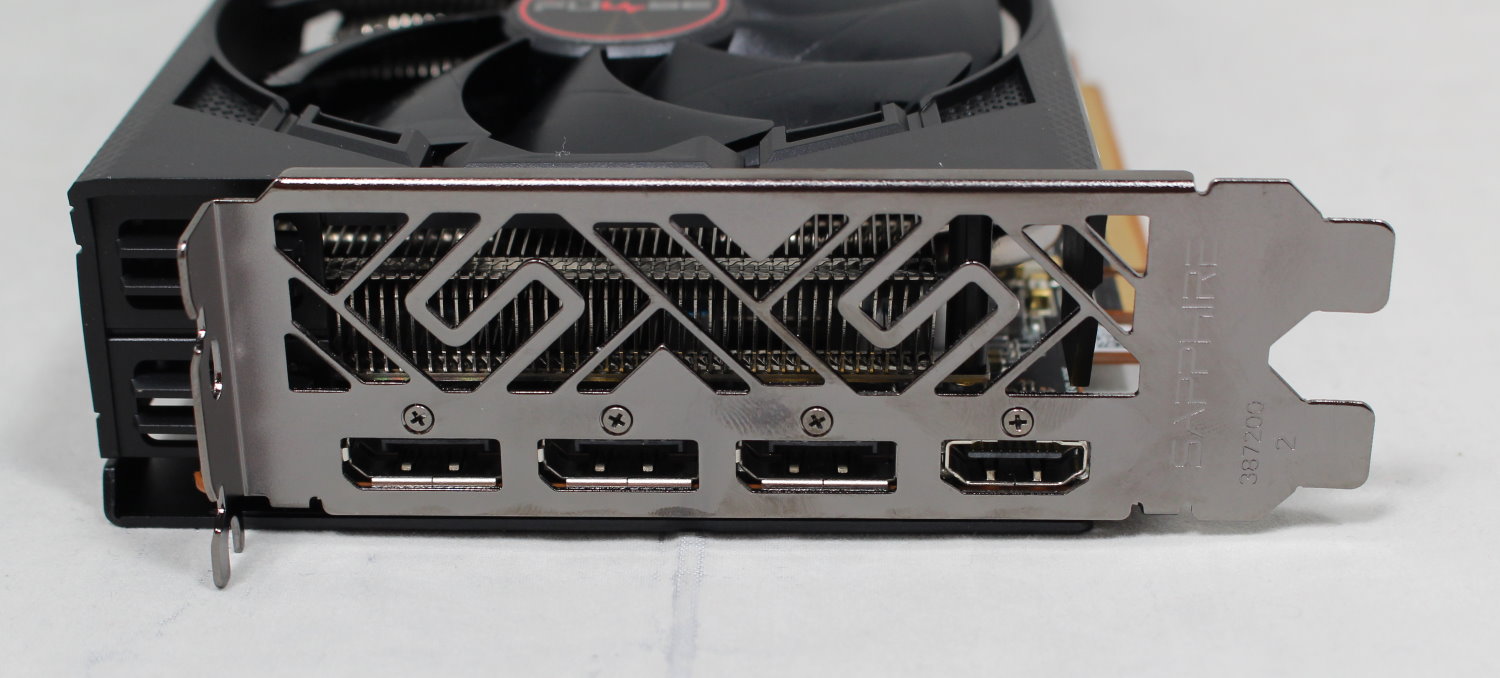
Outputs on the Sapphire Pulse RX 5500 XT consist of three DisplayPorts and a single HDMI port. Details weren’t available at publication, but we suspect the DipslayPorts are 1.4 and the HDMI is 2.0. The IO plate is cut out with the Sapphire “S” symbol for a unique design aesthetic, allowing for plenty of air, though not all, to exit the case here. The rest is exhausted through the sides of the GPU and into the case.
How We Tested AMD RX 5500 XT 4GB
We capture our frames per second (fps) and frame time information by running OCAT during our benchmarks. In order to capture clock and fan speed, temperature, and power, GPUz's logging capabilities are used. Soon we’ll resume using the Powenetics-based system used in previous reviews
Recently, we’ve updated the test system to a new platform. We swapped from an i7-8086K to the Core i9-9900K. The eight-core i9-9900K sits in an MSI Z390 MEG Ace Motherboard, along with 2x16GB Corsair DDR4 3200 MHz CL16 RAM (CMK32GX4M2B3200C16). Keeping the CPU cool is a Corsair H150i Pro RGB AIO, along with a 120mm Sharkoon fan for general airflow across the test system. Storing our OS and gaming suite is a single 2TB Kingston KC2000 NVMe PCIe 3.0 x4 drive.
The motherboard was updated to the latest (at this time) BIOS, version 7B12v16. Optimized defaults were used to set up the system. We then enabled the memory’s XMP profile to get the it running at the rated 3200 MHz CL16 specification. No other changes or performance enhancements were enabled. The latest version of Windows 10 (1909) is used and is fully updated as of December 2019.
As time goes on, we will build our database of results back up based on this test system. For now, we will include GPUs that compete with and are close in performance to the card that is being reviewed. In this case, we have two Nvidia cards from Zotac, the GTX 1650 Super, and GTX 1660. On the AMD side, we’ve used the Polaris based XFX RX 590 Fat Boy.
Our list of games test games is currently Tom Clancy’s The Division 2, Ghost Recon: Breakpoint, Borderlands 3, Gears of War 5, Strange Brigade, Shadow of The Tomb Raider, Far Cry 5, Metro: Exodus, Final Fantasy XIV: Shadowbringers, Forza Horizon 4 and Battlefield V. These titles represent a broad spectrum of genres and APIs, which gives us a good idea of the relative performance difference between the cards. We’re using driver build 441.20 for the Nvidia cards and Adrenalin 2020 Edition 19.12.2 for AMD.
MORE: Best Graphics Cards
MORE: Desktop GPU Performance Hierarchy Table
MORE: All Graphics Content
Current page: Features and Specifications
Next Page Performance Results: 1920 x 1080 (Ultra)
Joe Shields is a staff writer at Tom’s Hardware. He reviews motherboards and PC components.